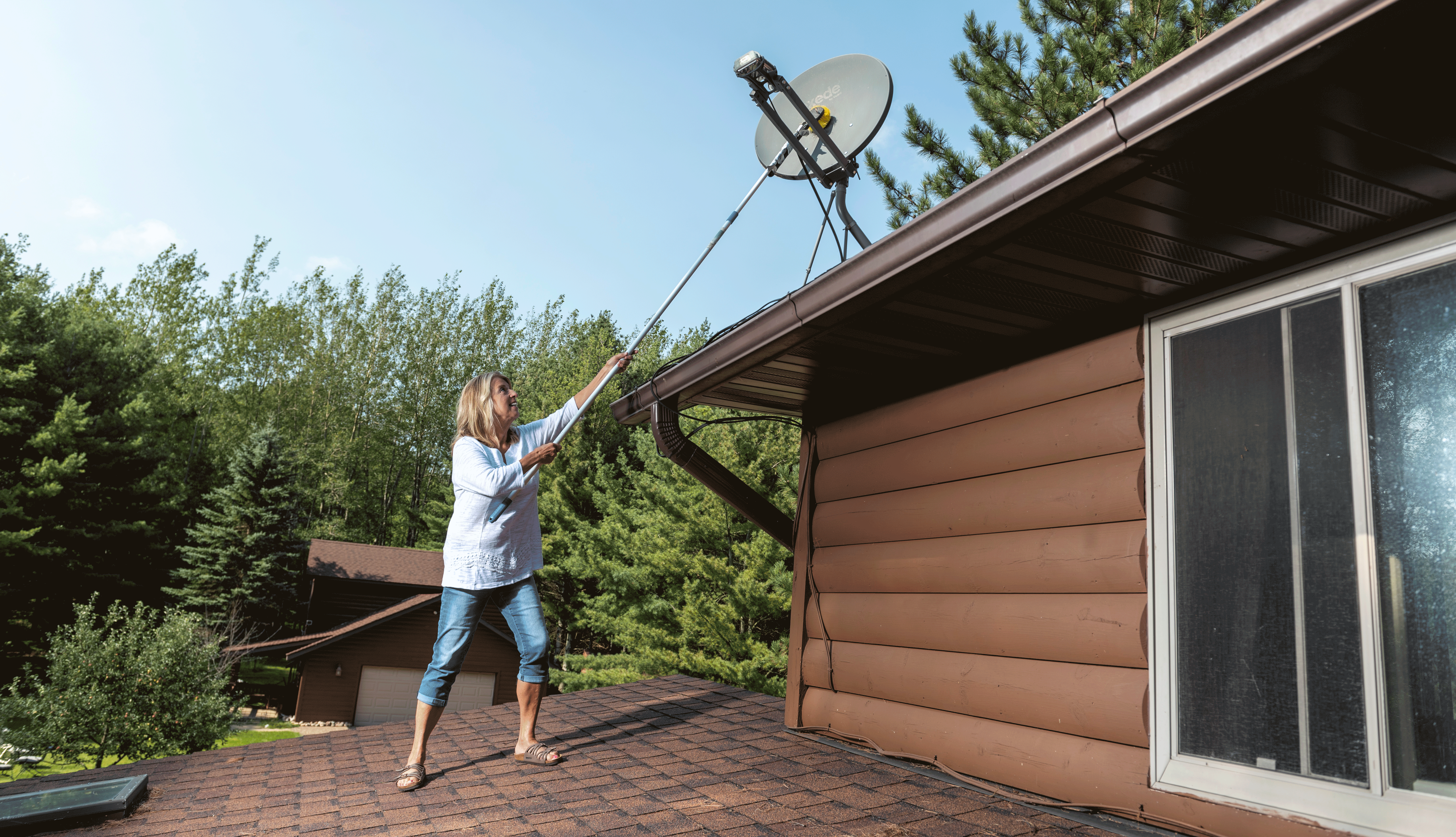AARP Hearing Center

Snow in the dish: It’s a common winter hazard in northern Wisconsin. To join a virtual meeting of AARP Wisconsin volunteer advocates, Gleason resident Sue Dierksen first had to liberate her satellite dish. She crawled over a deck railing, knocked snow out of the dish with a pole and got online in time for the meeting. Even without the snow, her satellite internet service is weak and erratic, says Dierksen, 66.
“There are times when it goes out for no reason,” she says.
That’s annoying when she is trying to get online for meetings and entertainment but a critical failing when connecting with medical professionals. The balky connection can’t support telehealth, so Dierksen and her late husband often drove two hours round trip for his medical visits.
Reliable and affordable high-speed internet service has rocketed to the top of AARP Wisconsin’s advocacy agenda. Staffers say the longtime issue became urgent as Wisconsin grappled with the COVID-19 pandemic’s fallout, with spotty connectivity for long-term care residents, schoolchildren and businesses.
Services like video calls and telehealth that helped older adults in cities during the pandemic were not available everywhere, says Helen Marks Dicks, state issues advocacy director for AARP Wisconsin.
COVID-19 shows need for speed
High-speed internet access is no longer just a convenience; it’s a lifeline, she says. When COVID shots became available, appointments were hard to get without reliable service.
Access to specialists, especially for chronic conditions and mental health treatment, is significantly easier with video visits, says Dierksen, a retired nurse.
In rural areas, about a third of residents have no high-speed service, says Sam Wilson, state director for AARP Wisconsin.
Overall, about 10 percent of state residents have little or no access. Regulators saw the need for better service firsthand during the pandemic and are now directing resources to build high-speed internet infrastructure, says Ellen Nowak, a commissioner on the Wisconsin Public Service Commission (PSC).
Nowak was relieved to be able to communicate virtually with her parents in Florida last year. With Gov. Tony Evers (D) committed to spending $100 million in federal stimulus funds on internet expansion, the PSC will soon sort through requests from counties, municipalities and service providers. The two-year budget signed by Evers in July adds $125 million in state grants.
Broadband infrastructure must be designed according to topography, population density and business needs when choosing between transmission towers and fiber cables, for instance. It will take a few years to wire the state, Nowak says.
Health care providers and educators also are pressing for a robust high-speed build-out, notes Dale Knapp, director of Forward Analytics, a division of the Wisconsin Counties Association. The state Department of Public Instruction monitors home internet access and found that in some school districts, one-fourth of families lack service
AARP Wisconsin welcomes feedback. “We’d like to hear stories of when high-speed internet would have made a difference to you,” Dicks says. Contact AARP Wisconsin at 866-448-3611 or aarp.org/wi.
Joanne Cleaver is a writer living in Charlotte, North Carolina.
More on High-Speed Internet:































































